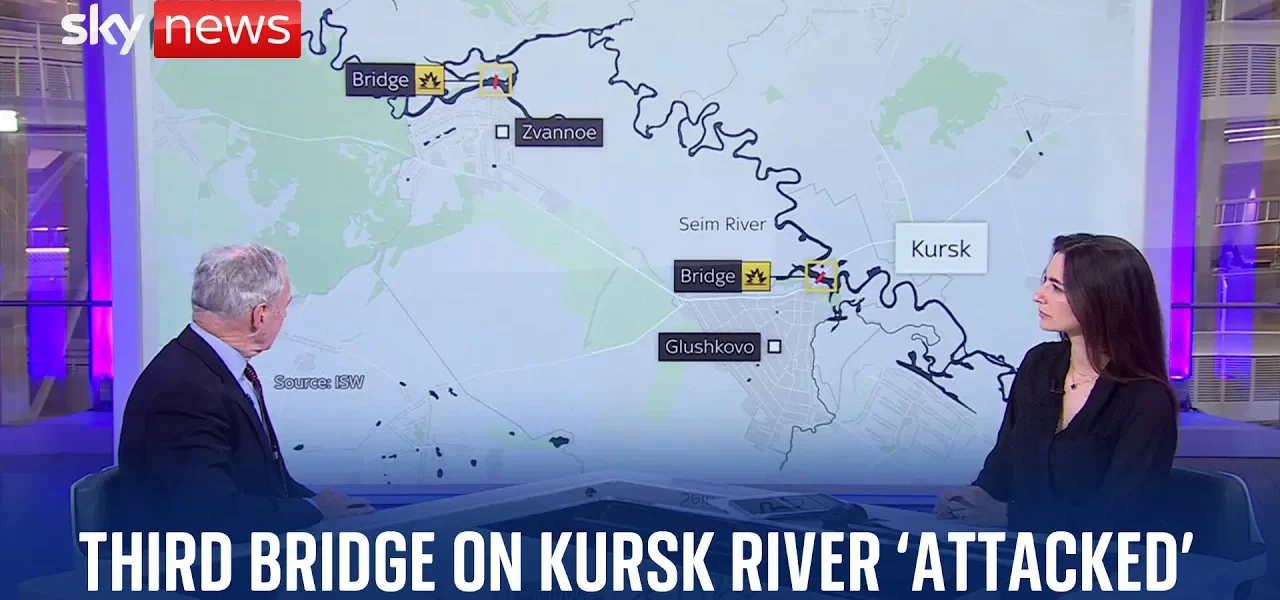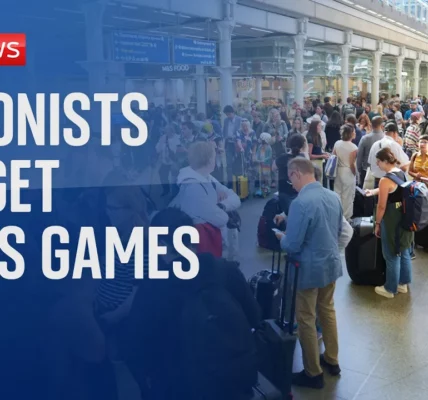Moscow Confirms Third Strategic Bridge Attack in Russia’s KK Region

This article delves into the recent military actions in Russia’s KK region, focusing on the strategic implications of the attacks on three critical bridges, as analyzed by defense expert Professor Michael Clark. The ongoing conflict continues to evolve, raising questions about military strategies and regional stability.
Introduction
The ongoing conflict in Ukraine has reached a pivotal moment with the recent confirmation of the attacks on three strategic bridges in Russia’s KK region. These developments, characterized as a counter-punch by military analysts, signify a shift in the dynamics of the conflict. As Professor Michael Clark highlights, the destruction of these key infrastructures could have far-reaching consequences for Russian military operations and Ukrainian strategies alike. This article will explore the implications of these attacks and what they mean for the future of the conflict.
The Significance of the Bridge Attacks
The recent attacks on the bridges across the Sem River are not just tactical victories for Ukraine; they represent a significant strategic blow to Russian military operations in the area. With three bridges targeted, the ability for Russian forces to effectively maneuver and reinforce their positions south of the river has been severely compromised.
Timeline of Events
- Friday: First bridge down at Glushkov.
- Sunday: Second bridge attacked at Zano.
- Latest reports: Third bridge targeted at Carriage.
Implications for Russian Forces
With the bridges being the only means of crossing the Sem River, Russian forces are now limited in their ability to respond to Ukrainian advances. Currently, they can only rely on a pontoon bridge at Kuso, which is inadequate for substantial troop movements. This lack of infrastructure could lead to:
- Increased vulnerability of Russian positions.
- Challenges in logistical support and troop reinforcements.
- Potential for Ukrainian forces to capitalize on the situation.
Ukraine’s Tactical Response
Ukraine has demonstrated a proactive approach following these attacks. Rather than consolidating their positions, they are actively seeking to exploit the gaps created by the bridge destructions. This shift in strategy is a notable departure from previous phases of the conflict, where Ukrainian forces were often on the defensive.
Current Offensive Operations
Experts indicate that Ukraine is not merely consolidating but is also continuing to push forward. Key elements of this strategy include:
- Deployment of significant military resources, including four to five major brigades in the area.
- Maintaining operational secrecy to keep Russian forces guessing about troop movements and strategies.
- Creating a sense of urgency and pressure on Russian command structures to respond effectively.
Potential Risks
Despite the advantages, Ukraine’s offensive strategy carries inherent risks. The allocation of forces to the KK region could lead to vulnerabilities in other critical areas, notably the southern front where Russian forces are reportedly preparing for counterattacks. Key considerations include:
- Balancing resources across multiple fronts to avoid overexposure.
- Maintaining morale among troops while managing operational demands.
- Assessing the risk of Russian reinforcements and potential counter-offensives.
The Russian Response and Future Outlook
The Russian military response to the bridge attacks has been criticized as slow and ineffective. With ongoing challenges in mobilizing sufficient troops, the Kremlin’s inability to rectify the situation quickly has led to a perception of weakness.
Challenges Facing Russian Forces
Russian forces are grappling with several issues, including:
- A shortage of personnel, relying heavily on conscripted troops.
- The logistical difficulties of moving reinforcements from distant regions, such as Kaliningrad and Crimea.
- Struggles in regaining control over lost territory, particularly in the Kers pocket.
Strategic Implications
The ongoing situation poses several strategic implications for both sides:
- Increased pressure on Russian command to deploy more substantial units to regain control.
- Potential shifts in the balance of power within the region, depending on the outcome of ongoing confrontations.
- The possibility of a prolonged conflict as both sides adapt to new challenges and opportunities.
Conclusion
In summary, the confirmed attacks on the strategic bridges in Russia’s KK region represent a significant development in the ongoing conflict between Ukraine and Russia. This situation has not only altered the tactical landscape but has also raised questions about the future military strategies of both nations. As Ukraine continues to push its offensive, the world watches closely to see how Russia will respond to reclaim lost ground. The evolving dynamics suggest that both sides are at a critical juncture, making it imperative for observers to stay informed on the developments ahead. For more insights on military strategies and geopolitical analysis, check out our related articles.
“`




